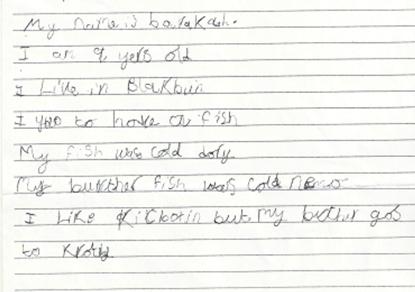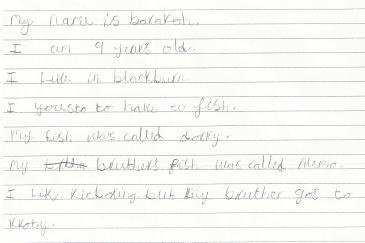{googleAds}<script type="text/javascript"><!--
google_ad_client = "ca-pub-9940670887654728";
/* Expert Articles 468x60 */
google_ad_slot = "7545621260";
google_ad_width = 468;
google_ad_height = 60;
//-->
</script>
<script type="text/javascript"
src="http://pagead2.googlesyndication.com/pagead/show_ads.js">
</script>{/googleAds}
I remember teaching a child in year 9 (we’ll call him Sammy) who was so ashamed of his handwriting that he covered everything he wrote (which, to be fair, was very little) with his left hand as he wrote it. He hated what he saw in his exercise books – so he put nothing into them, or, if he really couldn’t avoid having to do something, he made sure he could see as little as possible of what he wrote. His behaviour, not surprisingly, was a constant problem, and the last I heard of him, he had become yet another exclusion statistic.
My previous article looked briefly at Visual Stress and reading. The same applies to writing: a person with Visual Stress writing on white paper may well see the letters moving around as they write. The result can be seen in the example (below) on the left. When they come to read what they have written, it is moving around again…
Now look at the example on the right: the same child, the same words, the same lesson. All that has changed is the paper. And the presentation, and the legibility, and the spelling of about eight words, and the child’s self-esteem…


I wonder what would have become of Sammy’s life if he’d had tinted exercise books to work in? Tinted exercise books cost more than plain white ones, but exclusion, and in many cases prison, costs a lot more still.

















